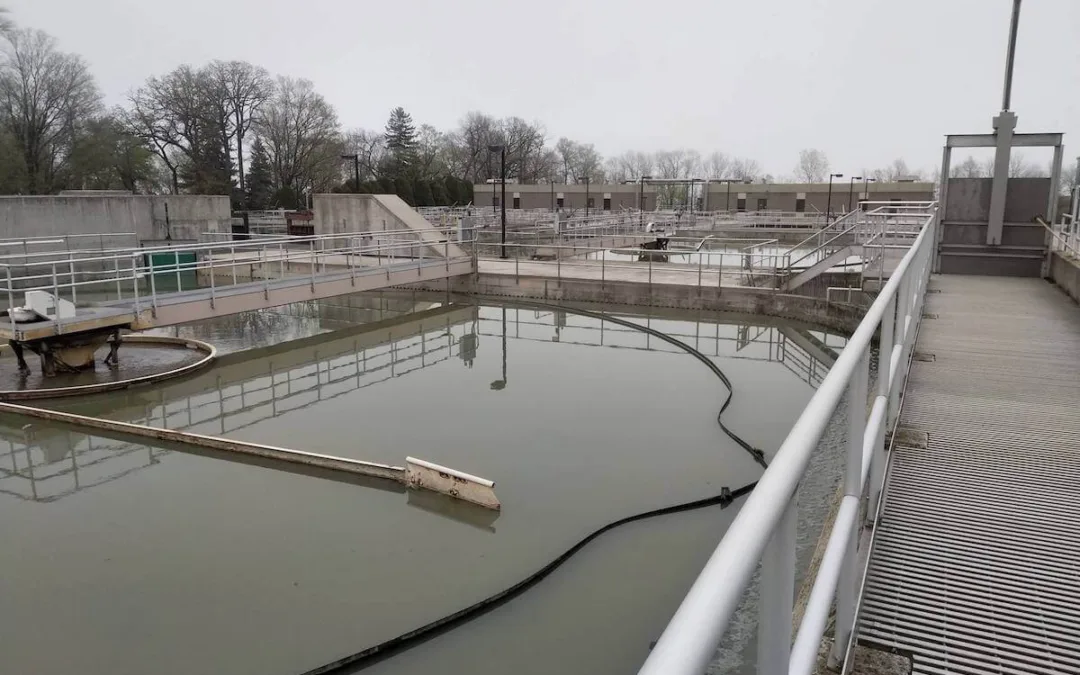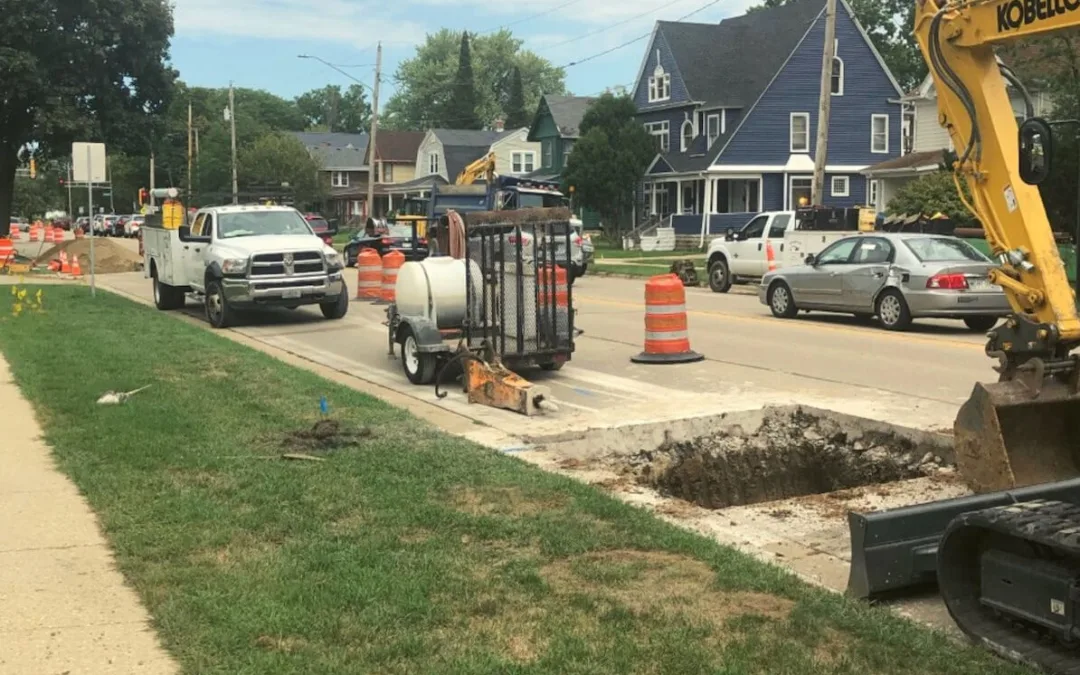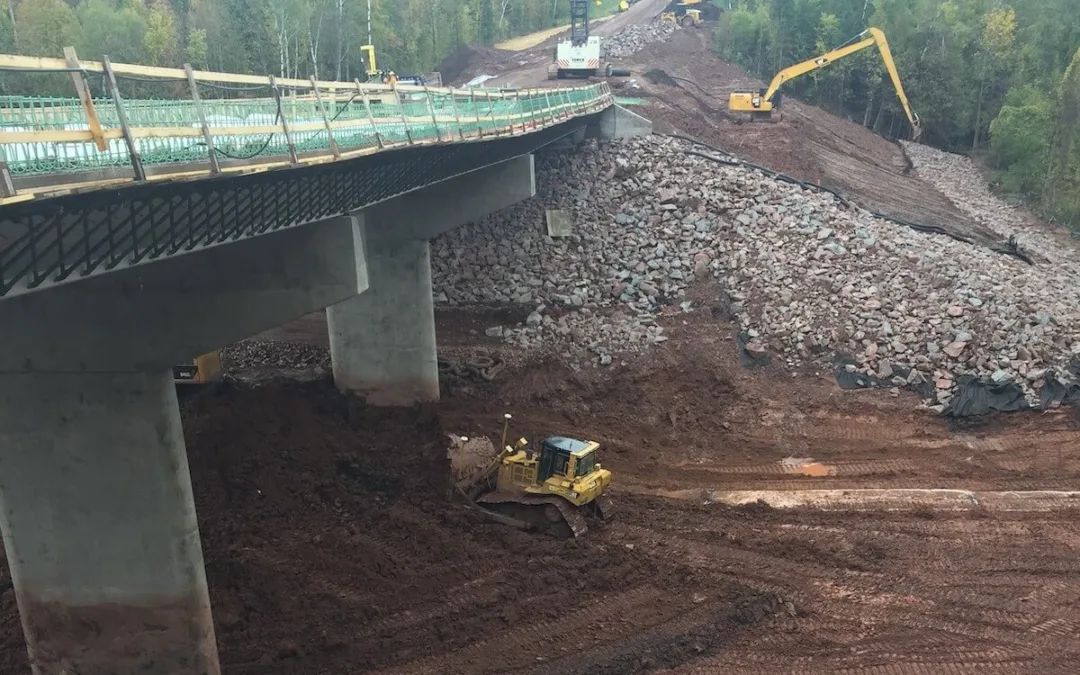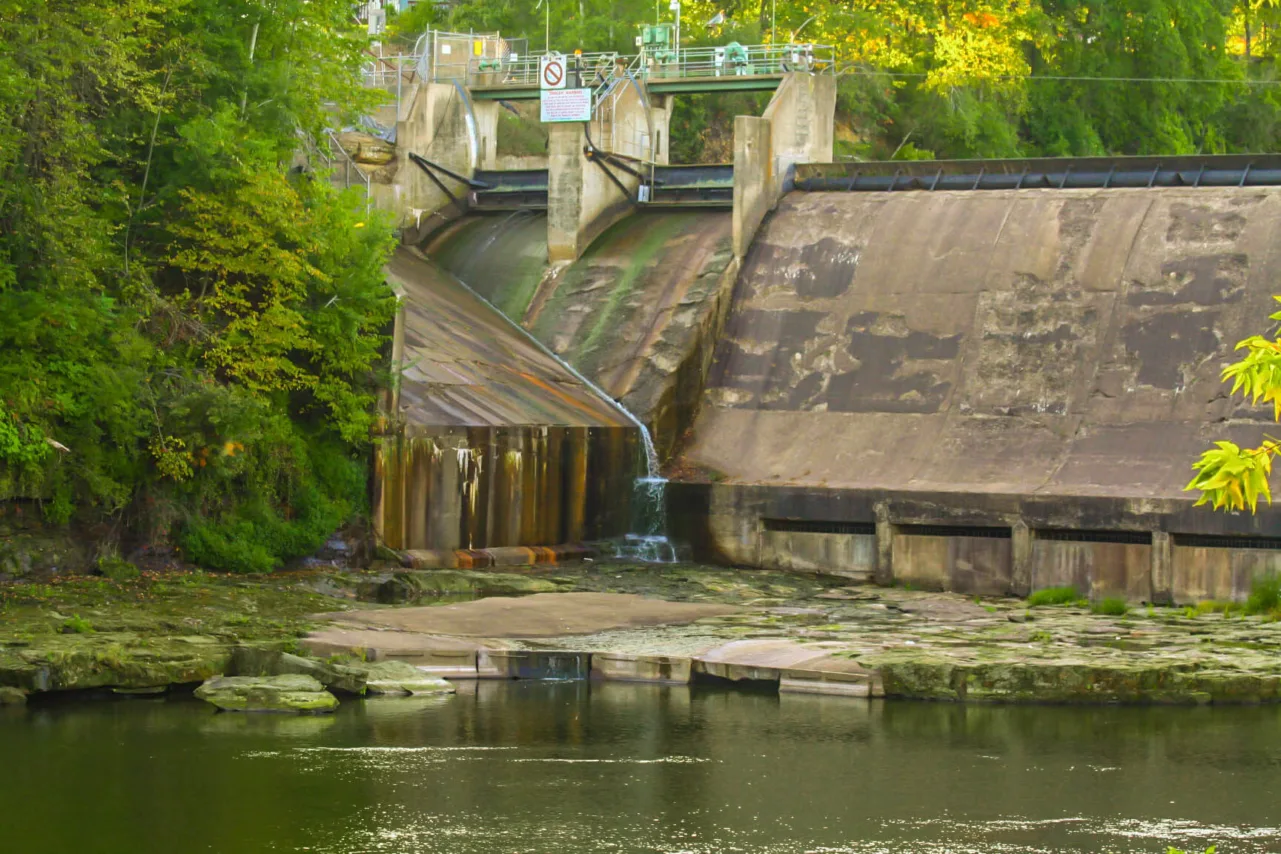
#image_title
#image_title
Eight in Wisconsin failed in 2018. Works Progress Administration-era structures are susceptible to more extreme weather as a nation debates what to invest in itself.
Wisconsin has almost 4,000 reasons to make a serious investment in infrastructure, but most people don’t even think about them until something goes wrong.
The Wisconsin Department of Natural Resources has around 3,900 dams in its database, of which 228 are considered high-hazard, meaning that if they fail the result could be significant property damage and loss of life.
In December 2019, an Associated Press two-year investigation had found 1,688 high-hazard dams in 44 states and Puerto Rico were in poor or unsatisfactory condition. Six were in Wisconsin.
The report came out more than a year after heavy rains in Wisconsin caused eight dams to fail in the summer of 2018. Wisconsin Public Radio reported that from 2008 to 2018, 14 dams had failed across the state, which includes the eight from the summer of 2018.
Despite the recent failures and continued aging of Wisconsin’s dams, not much has changed in terms of dam inspection and maintenance.
“I call it ‘flood amnesia,’” said Brad Woznak, a water resources engineer based in River Falls. “People remember the floods within the few years following. But if you don’t act on it right away when people typically are willing to pay for the required upgrades, unfortunately if an accident doesn’t happen or you go four years during a dry spell and the dam appears to be functioning, too often they get easily forgotten. You build it and forget about it until there is an issue.”
RELATED: Almost 1,000 Wisconsin Bridges Are In Dire Need of Repairs. A Federal Infrastructure Bill Could Help.
That seems to be what’s happened all across Wisconsin. Many dams were built during the Works Progress Administration (WPA) era, which started in 1935 and wrapped up around 1943, and were built with only a 50- to 100- year lifespan.
“So many of them are well beyond their service life,” Woznak said.
Overall, the American Society of Civil Engineers rated Wisconsin’s dams a C+; nationwide, that grade is a D. President Joe Biden’s American Jobs Plan includes $50 billion for upgrading infrastructure, including dams, to be more resilient in the face of climate change.
While Wisconsin spends $200 more per regulated dam than the national average, the dam safety budget, at $750,000 a year, is only enough for 6.25 full time staff to inspect and oversee the maintenance of thousands of dams spread across the state.
Woznak, who works for Chippewa Falls-based civil engineering firm SEH, pointed out that the cost of regular inspection and maintenance far outweighs the cost of a failed structure. One dam along the Cranberry Creek in Douglas County that was damaged in 2018 would have cost at least $175,000 to replace.
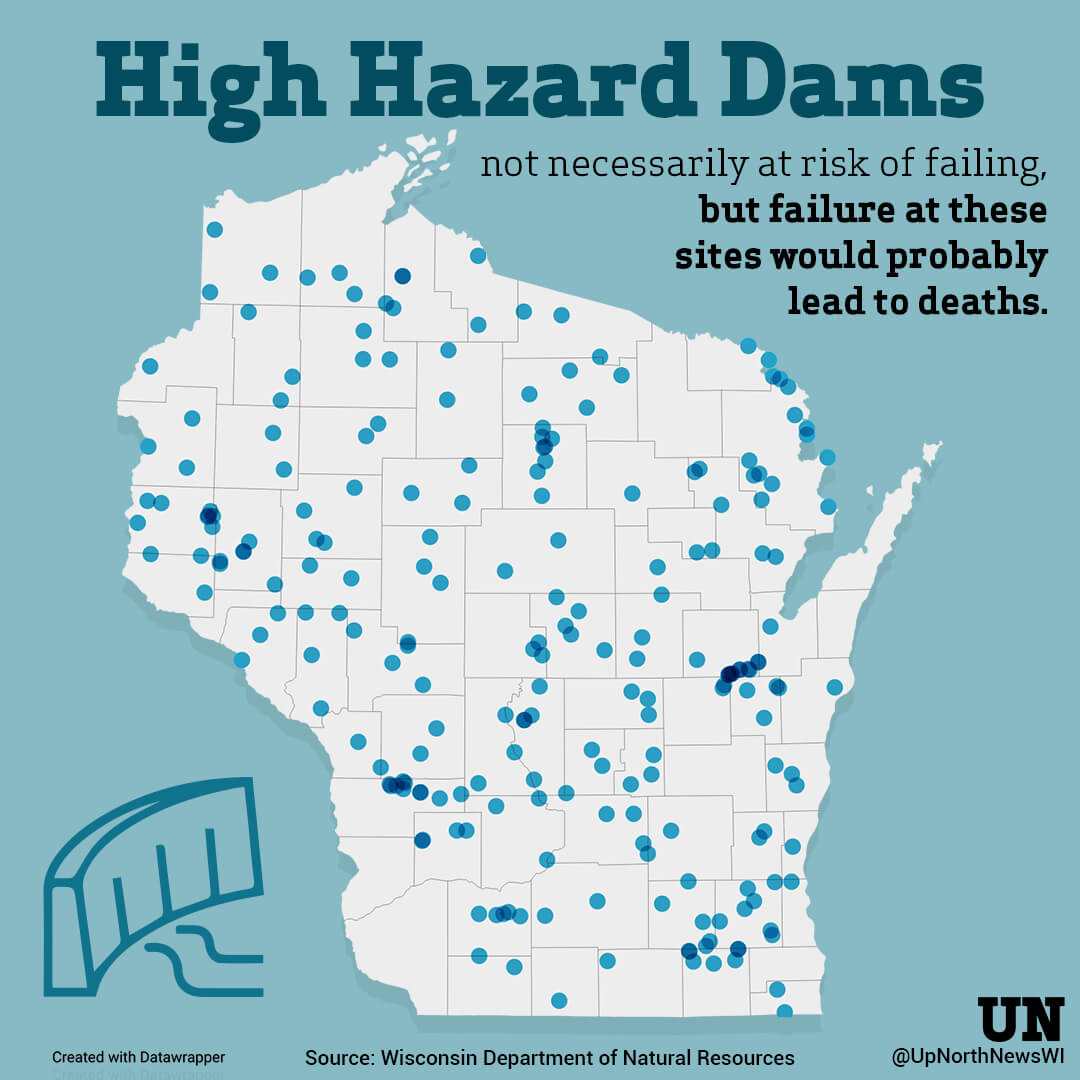
“It’s always better to spend money before the problem happens,” Woznak said. ”Dams are costly. It’s how do you go about paying for them?”
“Obviously any funding to assist with dam projects and dam repairs and to mitigate risk and to assist with dam safety, it’s always a positive,” said Tanya Lourigan, the DNR’s dam safety engineer. “Any kind of funding to help with dam repairs and mitigating risk would be a positive.”
High-hazard dams are inspected every two years and low hazard dams are inspected every ten years, though inspectors can conduct additional inspections if deemed necessary. But while regular inspection and maintenance can extend a dam’s lifespan, climate change’s impact on weather patterns makes it harder to predict what conditions dams will have to withstand.
Warming temperatures cause more water to evaporate into the atmosphere causing the eventual rainfall to be much heavier. It also causes storms to move more slowly, so heavy precipitation is concentrated in a smaller area, increasing the risk of flooding and dam failure.
A valuable investment would be to take down dams that are no longer needed and have grown too expensive to maintain. That’s what officials in Douglas County did with the dam on Cranberry Creek when they realized how expensive it was to rebuild and maintain it. The DNR has a grant program for decommissioning dams which Lourigan said is “well-funded,” but taking down such a structure safely is not easy, nor cheap.
“I think it definitely needs to be looked at those that, you know, that no longer serve a purpose or probably should be removed and properly restored to a free-flowing river,” Woznak said. “I would say a lot of times with a lot of infrastructure, the actual ongoing maintenance costs may not have been well thought-out. Or maybe at the time it was, but they’ve outlived their service life in a lot of cases too.”
Politics

Eric Hovde’s company exposed workers to dangerous chemicals, OSHA reports say
A Madison-based real estate company run by Wisconsin US Senate candidate Eric Hovde settled with the Occupational Safety and Health Administration...
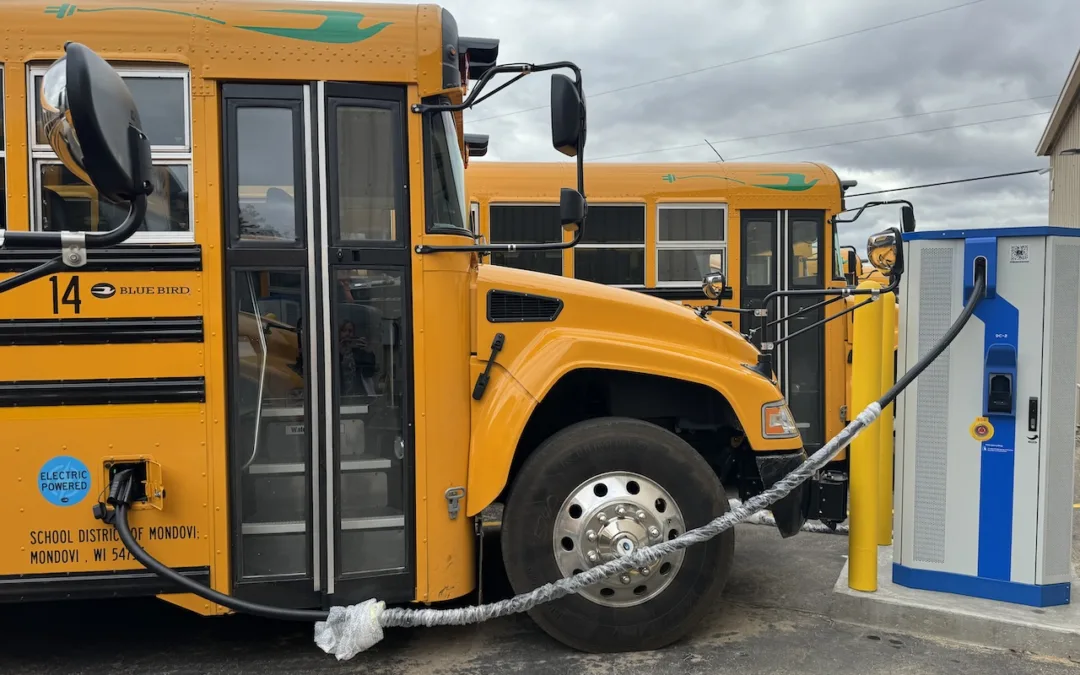
Plugged in: How one Wisconsin school bus driver likes his new electric bus
Electric school buses are gradually being rolled out across the state. They’re still big and yellow, but they’re not loud and don’t smell like...
Local News

Stop and smell these native Wisconsin flowers this Earth Day
Spring has sprung — and here in Wisconsin, the signs are everywhere! From warmer weather and longer days to birds returning to your backyard trees....

Your guide to the 2024 Blue Ox Music Festival in Eau Claire
Eau Claire and art go hand in hand. The city is home to a multitude of sculptures, murals, and music events — including several annual showcases,...


